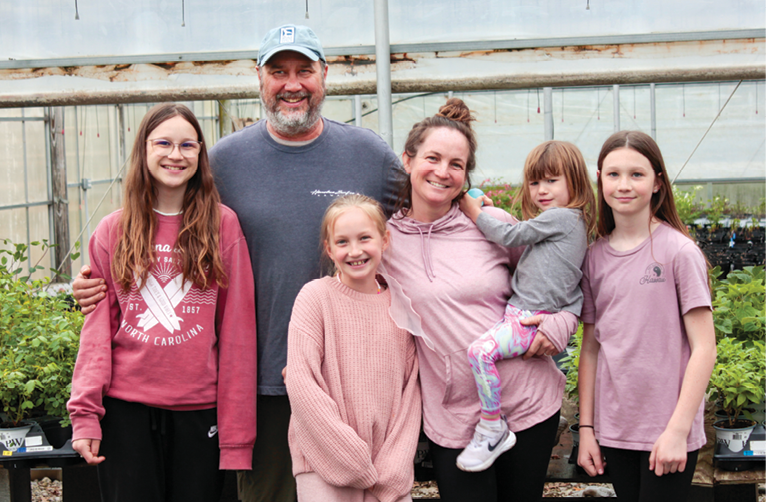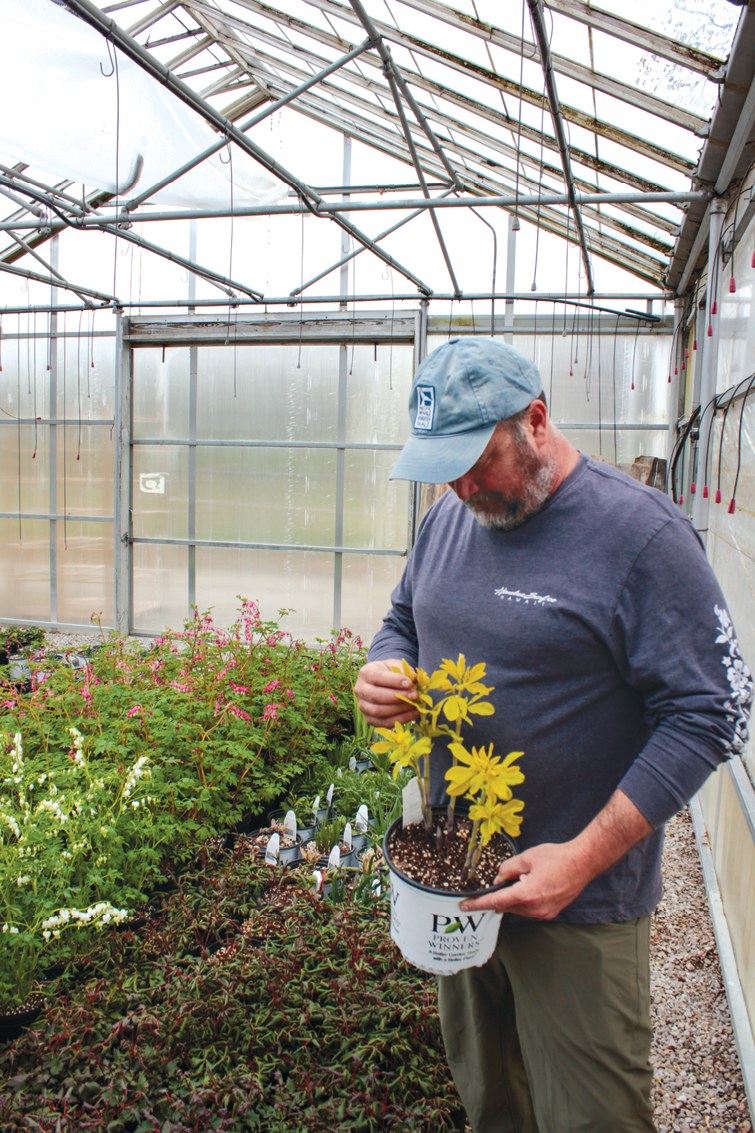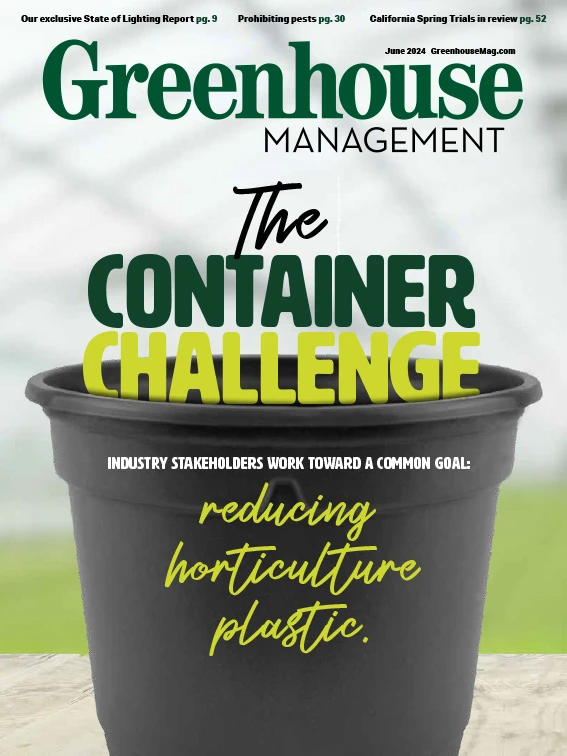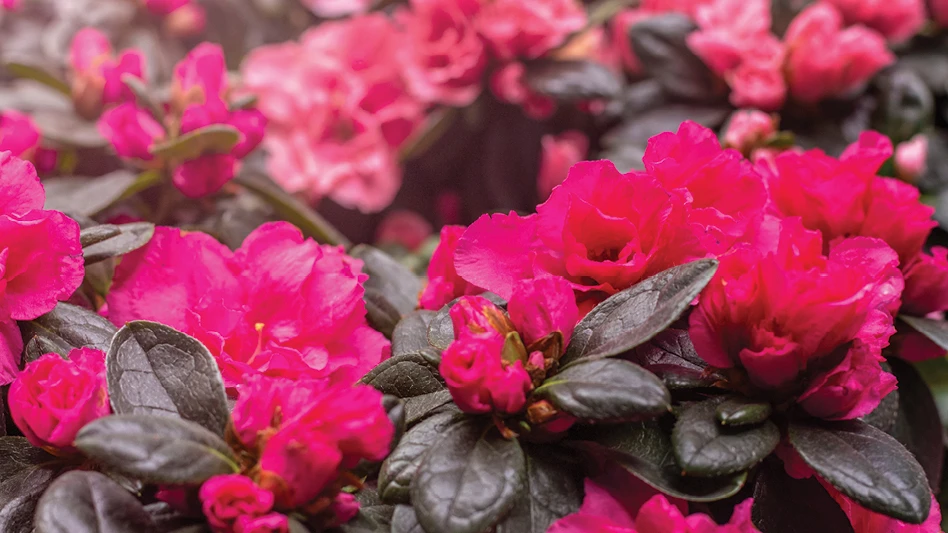
As a seventh-generation grower, Eddie Barrow is deeply rooted in his family’s longstanding commitment to producing hardy, high-quality plants.
His parents, Roger and April Barrow, purchased Whiteford Greenhouse in Toledo, Ohio, in the 1970s, just a couple of years before he was born. Barrow grew up in the greenhouse, where he started growing hens and chicks (Sempervivum tectorum) at the young age of 5.
“I grew up just loving plants and being outside,” says Barrow, who started his own lawn care service at age 12 and began hybridizing plants as a teenager. When retail customers asked for plants like jack-in-the-pulpit (Arisaema) or lady’s slipper orchids they couldn’t sell at the greenhouse, Barrow would find some to propagate himself.
He joined Whiteford Greenhouse full-time around age 18, taking over the production of perennials while finishing his business degree. Now, as perennial production manager, Barrow is equipping the next generation of growers by sharing the vast plant knowledge he’s gained over the last 40 years.

Growing hardy
Barrow, 45, grows perennials, shrubs and wildflowers, while his father, 74, focuses on annuals. Most of Barrow’s perennial production happens outside on about 2 acres of fields, although he also uses about 1 acre of covered greenhouse space for propagation.
“I use the greenhouse to propagate and produce, and then we’ll take it outside as soon as we can,” says Barrow — who refers to pots as “holding cells” where “a plant needs to chill before it gets back in the ground where it wants to be.”
He keeps the greenhouses at “minimal temperatures — nice and cold,” he says. He also runs a negative differential, meaning he’ll “bring the plants up warm at night and cold in the morning,” he explains, “so they don’t stretch, and they grow those fat roots, and then go right outside.”
Barrow also utilizes cold frames and covers the fields with foam or poly to protect plants from freezing. He prefers to grow everything cold, which is key to cultivating hardy plants that will thrive in Toledo’s landscapes. “I figure if it’s not tough enough to live here, we shouldn’t grow it,” he says.


Adding varieties
Throughout the year, Barrow is always propagating something, producing a huge assortment spanning nearly 1,000 varieties of perennials. At one point, he was growing more than 500 varieties of hostas, which got overwhelming, he says. Currently, he sells between 200 and 300 varieties of hostas, about 50 varieties of daylilies and more than 30 varieties of coneflowers (Echinacea). He also grows several varieties of barrenwort (Epimedium).
For the last 25 years or so, Barrow has been hybridizing rare varieties of perennials — including Arisaema, Epimedium and Hellebore — to isolate certain traits. “Using species that you don’t see very often, I’ve found the traits I wanted —very interesting habits that no one’s seen before,” he says. “I figure you’ve got to be different these days because there’s so many varieties out there now.”
For example, he’s been hybridizing a native Japanese species of hosta with unique hooked leaf tips, like a hawk’s bill or an eagle’s claw, he says. “I got the leaf to stand up straight and then hook, and then I started getting waves in it, so now the leaves stand up with hooked bills, rippled edges and variegation up the center.” These hybrids also feature veins that fuse together, bringing the red from the leaf petiole into the leaf base, he says.
Hybridization is time-consuming but also fun, Barrow says. “I’m trying to create my own series that I’d like to start introducing within the next five to 10 years.”

Educating gardeners
In addition to selling perennials through the retail greenhouse, Barrow has also carved out a market selling his hybrids online. Through his Etsy shop, MrPerennial, Barrow sells more than 500 varieties to plant-loving customers across the country. He has made more than 6,000 sales, with thousands of 5-star reviews.
“I really enjoy being online and being able to interact with people all over the country,” he says. “It’s really cool to be able to create gardeners and help facilitate [their success]. Happy gardeners buy more plants, and my ultimate goal is to get more plants out there in the world.”
Barrow regularly answers plant-related questions through his Etsy shop and Instagram page. The next step, he says, is to create a comprehensive online database featuring all the pertinent information per plant buyers could ever need, using insights from his decades of experience and detailed notes, photos and videos documenting his growing mistakes and victories over the years.
By sharing this knowledge, Barrow hopes to keep his family’s plant passion alive for generations to come. To be a successful grower, he says, “You’ve got to have a passion for plants. You’ve got to live and breathe growing. You can’t be a 9-to-5 grower; your lifestyle has to go along with the plant if you want to be successful.”
Get curated news on YOUR industry.
Enter your email to receive our newsletters.

Explore the June 2024 Issue
Check out more from this issue and find your next story to read.
Latest from Greenhouse Management
- Growing enlightened
- American Floral Endowment awards 17 organizations $60,700 in educational grants
- Floral businesses invited to join Society of American Florists' Petal It Forward event in October
- Bioline AgroSciences acquires Viridaxis to strengthen leadership in aphids biocontrol
- Ryley Leech joins JumpLights as vice president of sales
- Meet the Retailers' Choice Awards from 2025 Farwest Show
- Added value
- National Garden Bureau announces featured crops for 2026 'Year of the' program






